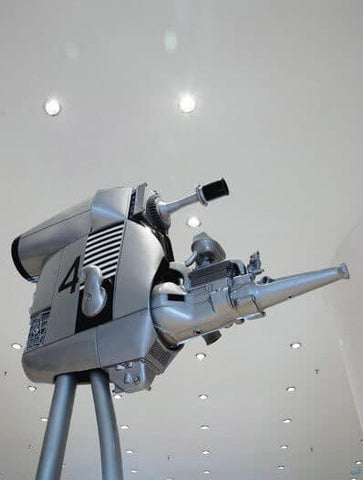Shinkichi Tajiri was a Japanese-American artist born in Los Angeles in 1923 and passed away in Baarlo, Limburg, in 2009. Despite his American background, he found his home in in the south of the Netherlands, after studying in Paris. His artistic journey began in 1940 when he received his first sculpture lessons from Donal Hord. During World War II, like many other Japanese-Americans, Tajiri was interned. In 1943, he volunteered and was sent to Italy. The war had a profound impact on him, leading him to declare, "Through the war, I became an artist."
After the war, Tajiri returned to Europe, studying in France from 1949. He studied under Ossip Zadkine and Fernand Léger and spent a year at the Académie de la Grande Chaumière. During this time, he created sculptures from scrap materials, often leaving them behind due to space constraints, a practice known as "one day sculptures."
In 1949, Tajiri became associated with the Cobra group and exhibited with them at the Stedelijk Museum in Amsterdam. His spontaneous approach and the significant role of materials in his work led to his inclusion in the Cobra group, and he participated in major Cobra exhibitions in Amsterdam and Liège. In 1956, Tajiri settled in the Netherlands with his second wife and fellow artist, Ferdi Jansen.
Tajiri's fascination with Japanese themes, such as Zen and Shogun, persisted throughout his life. He successfully integrated Eastern culture into Western art, infusing his entire body of work with a "silent dynamism." His pieces exude great energy while appearing in a state of repose. The juxtaposition of opposing elements, the balance between them, and the potential equality are characteristic of Eastern philosophy and Zen Buddhism, defining Tajiri's unique style.
Living a reclusive life on the countryside, Tajiri continued to explore his artistic pursuits. After the death of his third wife in 1969, he spent an extended period in Berlin, where he engaged in experimental photography, film, video, and digital media alongside his sculpture work. Tajiri exhibited globally in prestigious venues such as the Metropolitan Museum of New York, the Tokyo Biennale, and Documenta in Kassel. His works can be found in institutions like the Bonefanten Museum, CoBra Museum, and Beelden aan Zee.


Zentuin

Tajiri-De knoop-1976-Rotterdam

Royal Knot-1991-Paleistuin

Machine 2009-Art Zuid
